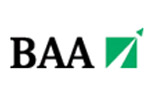Retired air traffic controller and blogger Don Brown had a great item yesterday. “President Obama’s budget includes cutting a ‘long-range navigation system’. . . . It took me a day or two to figure out they were talking about LORAN — Long-Range Aid to Navigation. Now, you tell me, did anyone (besides me) mention that LORAN was supposed to be the backup system for GPS? . . . Well, actually it was the DOD (you know, the folks in charge of GPS) via the JPDO that was warning everyone. I just happened to include it in my blog. Remember?”
Then, Brown links to a James Fallows post reporting on a GAO finding that the “U.S. Air Force, which runs the GPS satellites, has not managed to get new ‘IIF’-model satellites ready in time to replace the ones that are wearing out.” Brown: “So, we’re going to eliminate the system that GPS made obsolete, just in time for the GPS system to become unreliable. I assume the thought that the left hand of the government doesn’t know what the right is doing pops into your mind also.”
This reminded me of a new article by Jonathan Last about the natural process of knowledge decay in institutions. He documents the $92 million process of reconstructing the formula for “Fogbank,” a substance included in late-Cold War nuclear warheads whose formula had since been lost to history. Knowledge is lost, distorted, housed in human capital. Think of what happens when the admin in your office who’s been there for twenty-five years retires. No matter how much she writes down, she still takes away (and does not replace) a vast amount of institutional memory and knowledge.
And when you’re dealing with an institution as large and complex as the U.S. government, these kind of gaps are bound to happen frequently. The FAA thinks, “GPS, it’s a great system, let’s make it the basis of air traffic control.” (This is not a post on merits of Next Gen, FYI.) The Pentagon doesn’t bring a replacement for the current GPS system on line fast enough. And the OMB, eager to find redundancies in the federal budget, cuts the GPS back-up without knowing about delays in deploying its successor system. This is natural in giant institutions. We should probably be more surprised when systems actually work.

 As expected, the UK Competition Commission
As expected, the UK Competition Commission 

Liveblogging Randy Babbitt’s confirmation hearing
Posted in Evan's Commentary, tagged air traffic control, antitrust, congress, dot, faa, general aviation, labor, safety on May 19, 2009| 6 Comments »
The Senate Commerce Committee is holding a hearing today to review several nominations in its purview, including FAA administrator-designate J. Randolph Babbitt and DOT deputy secretary-designate John Porcari. Opening statements are going on now. Babbitt is, as you know, the former president of the Air Line Pilots Association and a pilot at Eastern. According to Mark Warner (D-Va.), who is chairing the hearing at the moment, Babbitt is “the right person to lead the FAA at the moment.” (Wow, tough crowd.) Porcari is Maryland’s secretary of transportation.
Opening statements by Babbitt and Porcari have been posted on the committee’s website.
I’m not on the Hill today, but I am watching the hearing’s live webcast. I’ll bring you aviation-related highlights of the hearing throughout the day, so refresh this post for the latest updates. Stay tuned!
Babbitt
11:43. Interesting item from Babbitt’s testimony: “I have worked with members of Congress on major aviation safety issues, including one of which I am most proud, ‘One Level of Safety.’ I led this project in 1993 while I was president of ALPA. This program resulted in required regional carriers to operate under the same rules and at the same level of safety as their major carrier counterparts.” Of significant relevance given the attention paid to small-lift provider safety standards in the wake of the NTSB’s Colgan Air crash hearings.
11:48. Frank Lautenberg (D-N.J.) was principally responsible for torpedoing the confirmation of Robert Sturgell, former president Bush’s FAA nominee. He’s much happier with Babbitt today, about whom, when he slips up and says “if you are confirmed, he adds “if you’re not it will be a miracle.” Lautenberg asks about the New York / New Jersey / Philadelphia airspace redesign. Would Babbitt put a hold on the redesign until frontline air traffic controllers ha had a chance to weigh in? “I’m not exactly certain where that process stands at this time,” Babbitt replies. “On a personal basis, I would really like to solicit input from all the stakeholders in that area. . . . I think it’s very important that [controllers] have input in this process.”
Lautenberg then raises a parochial concern that is more than parochial, given the airport’s role in the system: reported controller shortages at Newark Liberty International Airport. “Can you assure us that the Newark tower will be staffed to the volume of performance we require there?” Babbitt: “It’s my hope that every tower in this country will be staffed and manned to the highest degree.” He refers to the “bubble of controllers being in a similar age, a band of age” who are going to retire soon. (And already are.–ed.)
(more…)
Read Full Post »